This French Village Is So Much More Than Its Famous Sex Novel
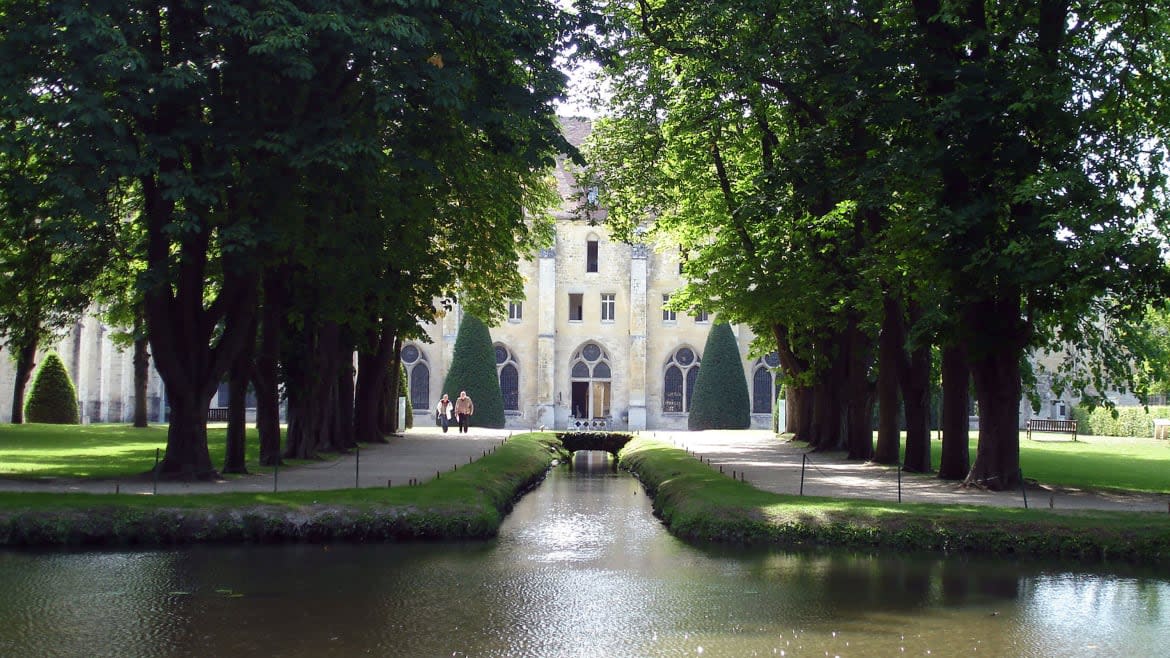
Bewilderment laced with pity would be the best way to describe the reaction of friends and family when I revealed where I was headed for my latest travel assignment.
“Roissy?! The airport?! But why?”
Truth be told, I too was a bit puzzled. In France, the Paris Charles de Gaulle Airport is also known as Roissy, and up until that point I had no idea that there was an actual town bearing the same name. Until I got my hands on a classic smutty novel, that is.
The Story of O was published in the mid-1950s and caused a stir in France, no less because the tawdry title was written by a woman (Dominique Aury, who wrote under the synonym Pauline Réage). I attempted to get through the onetime scandalous work of erotica in the name of research (really!), but kept dozing off. Basically, if 50 Shades of Grey (already terrible) and Eyes Wide Shut shared an especially French dull ancestor who had read a couple of Marquis de Sade books back in high school, this soporific parade of BDSM scenarios involving masks, chains, one-dimensional characters, and debauched aristocrats would be it.
More interesting, however, is that the sadomasochistic action unfolds in an elegant chateau in Roissy. Indeed, the name Roissy is evoked so many times in the slim novel—in Part II there are 38 Roissy references—that the name practically becomes synonymous with twisted secret societies, blindfolded damsels, and dissolute noblemen. Bad sex scenes aside, secret societies are intriguing and I’m always up for discovering a new chateau. Was the author inspired by a real-life place? I boarded the RER B train towards the airport, determined to find out.
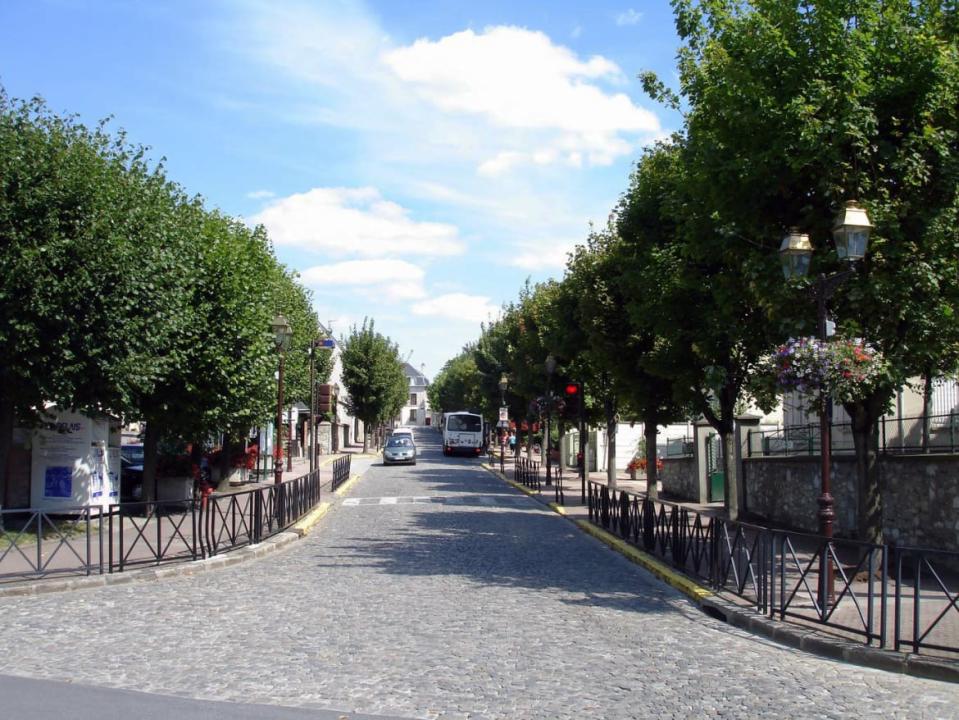
A street in Roissy-en-France.
The Charles de Gaulle Airport was its usual frenetic self, but after an eight-minute bus ride into town, the vibe completely changed. Roissy-en-France is quiet and peaceful with a pretty park at the edge of the town center with footpaths, flowers, and a gingerbread house-like town hall. Among the curiosities housed in the park is a display case containing the landing gear of the legendary Concorde supersonic jet, which made its final flight nearly 20 years ago. Continue a little further in and you’ll see a giant cedar tree that has stood there since before the French Revolution.
Like most of France, there is evidence of human settlements in Roissy that date back to the Neolithic era. However, the origins of the tiny town about 13 miles from the center of Paris began in earnest near the end of the 12th century. By 1537, the village comprised a chateau, a park, and about five-dozen patches of land. A windmill was built a few years later, and a weekly market sprung up around the same time. Things were fairly peaceful in small, agrarian Roissy until the Revolution’s infamous Reign of Terror, which saw buildings torched, farms seized, and the acquisition of the town’s chateau.
In the centuries that followed, Roissy was subjected to various upheavals—everything from Prussian soldiers to a cholera epidemic to Nazi occupiers—that threatened the village’s existence. The 1920s were particularly challenging as neighboring communities experienced rapid growth thanks to access to railway lines. No such transportation was available in Roissy, however, so the town remained an isolated rural village despite its proximity to Paris. According to official government statistics, some 1,200 citizens lived in Roissy during the Revolution, but by the early 1920s, just over 900 people resided in the village.
By the 1960s, Roissy was a struggling agricultural town of fewer than 1,400 people. When residents got wind of plans for a new airport—then called Paris Nord—most were strongly against it. Between the construction noise and the destruction of agricultural lands, many feared that the airport would deliver the coup de grâce to the village.
Ironically, following its opening in the mid-1970s, the new Roissy Charles de Gaulle Airport ended up breathing new life into Roissy and its surrounding communities. First came the construction of hotels to house the millions of travelers passing through, then came further development of the community itself. New housing units were built, others were renovated, and a sports complex and cultural center were constructed in the decades that followed. In 2003, the Grand Roissy Tourist Office opened in hopes of putting the area on the map as a travel destination in its own right.
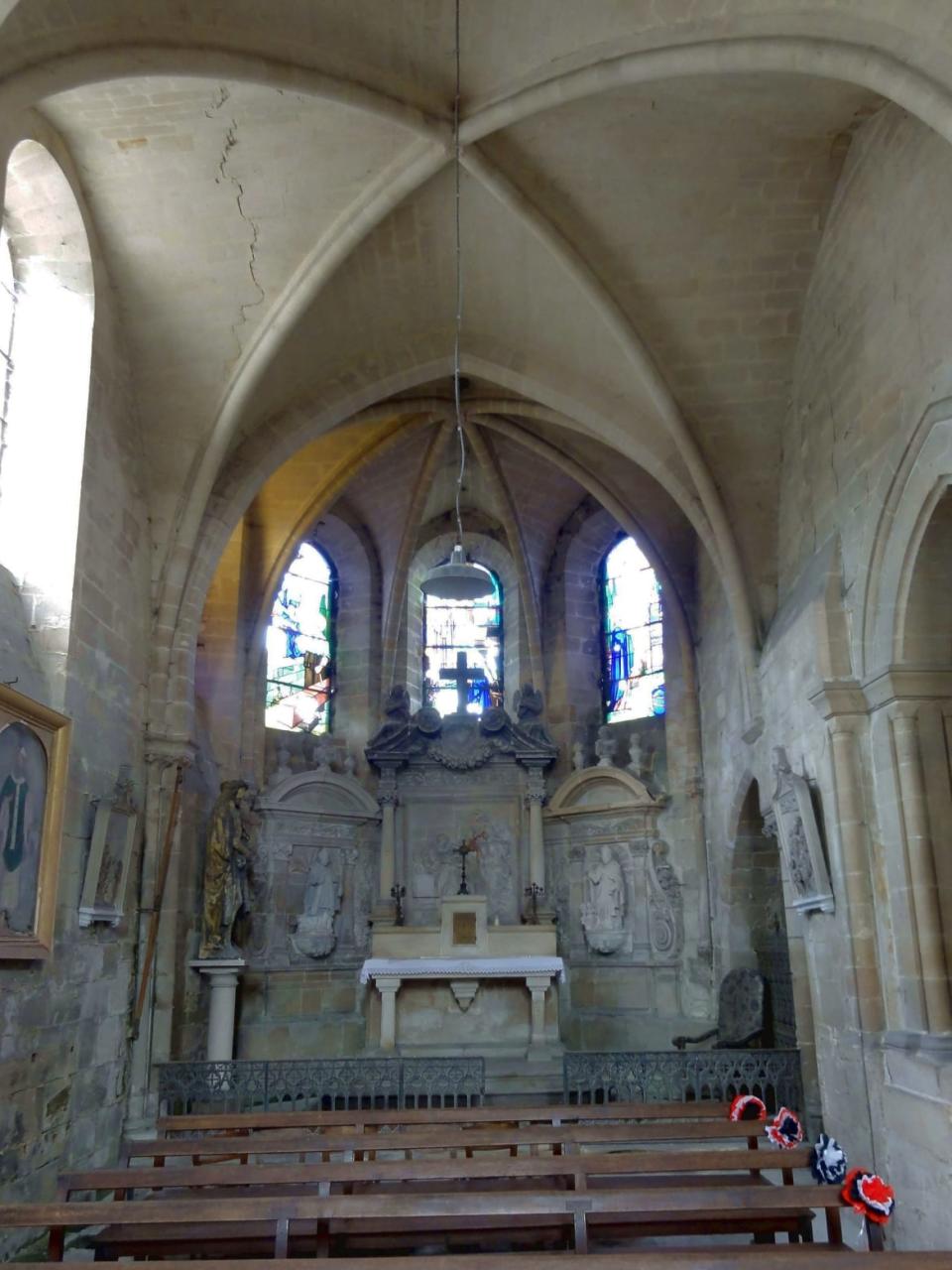
Église Saint-Éloi in Roissy-en-France.
What’s perhaps most striking is what hasn’t changed since the airport’s arrival and the town’s reinvention over the past five decades. Save for the occasional whine of a jet engine, Roissy has a tranquil, small-town vibe more fitting for a village that’s hundreds of miles from a major city. Stroll through the town’s center and you’ll find cozy restaurants, quiet streets and a stone church, the Église Saint-Éloi, that was built in the 16th century.
I was also surprised to learn that there are actually two Roissys. Sort of. In addition to the little town of Roissy-en-France, there’s also the Grand Roissy region that encompasses both Roissy and four other neighboring communities. Most of them are either an easy drive away from Roissy or the airport, and visitors can also access them via public transport from Paris. From June until late-September, there’s even an electric bus that shuttles travelers around the area and stops at the top attractions.
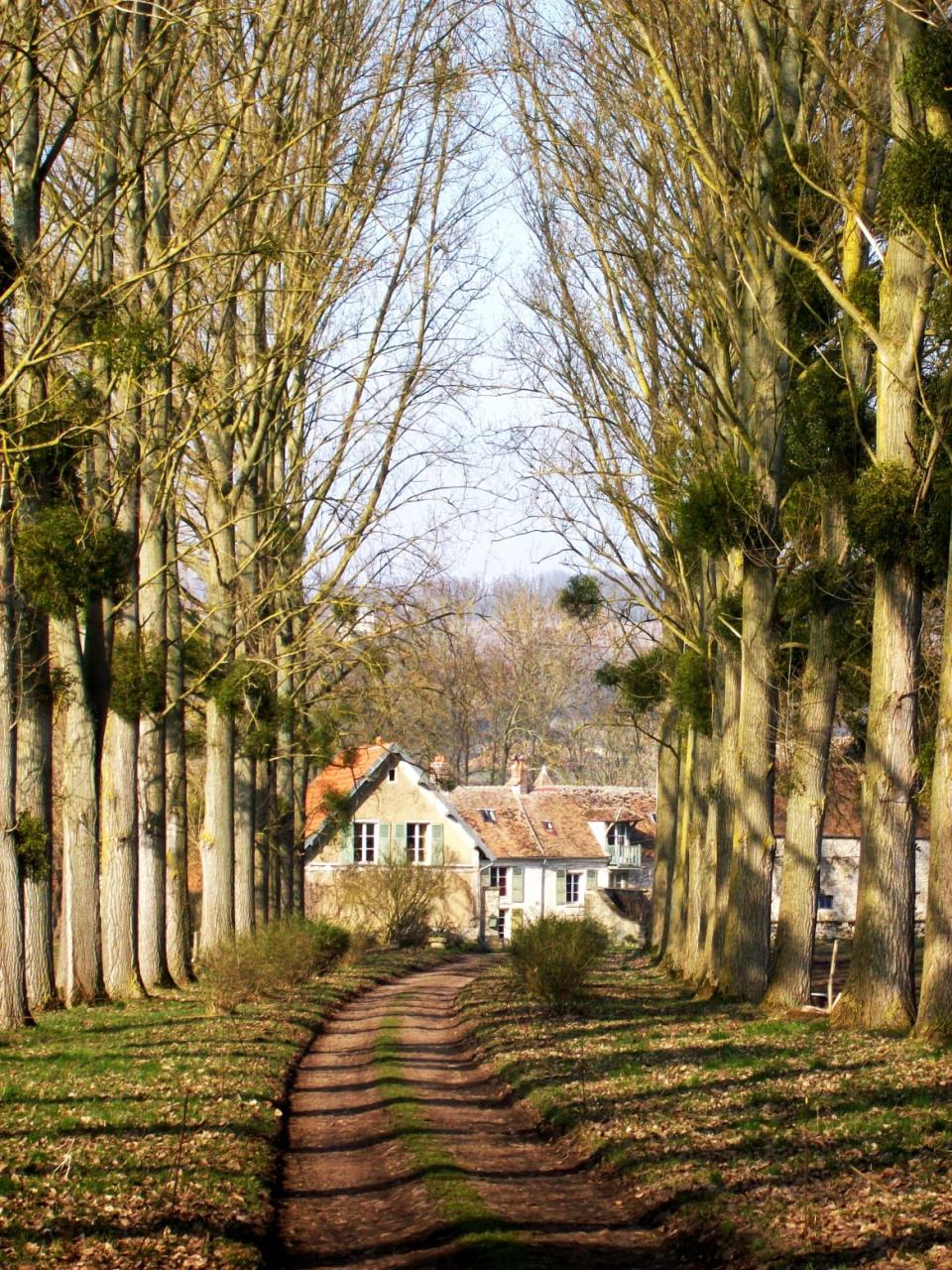
A view down a path in Luzarches, France.
Located on the edge of the forests of Chantilly and Coye-la-Forêt, Luzarches is part of Grand Roissy, and has fairytale-esque cobbled streets, medieval architecture, a feudal mound, and walking paths through verdant fields and woodlands. The tiny market hall in the center of town has been standing there since the Middle Ages, and as I made my way through narrow alleys and around the tall columns and weathered stone inside the centuries-old Paroisse de Luzarches church, I half-expected to encounter townspeople in 15th-century breeches and chaperones. And had I timed my visit for the autumn, I actually may have. Every fall, Luzarches pays homage to its past with a popular medieval faire, and I honestly can’t think of a better backdrop for such a fete.
However, one of the town’s most popular attractions sits (and sometimes ambles) in a wide field at the end of a tree-lined trail. It was raining buckets at this point, but curiosity won out over comfort and soon I was standing before a wide meadow where several hulking Highland cows were grazing. The cows were apparently a gift from Luzarches’ twin city of Montrose, Scotland, although no one I asked, including my guide, could tell me how the animals were transported from Scotland to France. Apparently, the cows’ country of origins takes center stage every year during the town’s Highland Games—Luzarches clearly has a thing for historical festivals—during which kilts are donned and cabers tossed.
After a five-mile trek in the pouring rain, I was relieved that my next stop was for lunch in Écouen, which is also a part of the Grand Roissy region. Constructed in the 1700s as a private mansion, Il Maestro’s history and architecture alone are reason enough to pop in for a meal. The building was inhabited by several noble families and later served as the home of the 19th-century painter Jules Paulin Lorillon, who was a prominent member of—L’Ecole de Écouen—an Écouen-based art colony that was inspired by the region’s natural beauty and daily life.
You can get an up-close look at the landscapes that inspired the group by following a marked trail through town, Le Parcours des Peintres, which features copies of the artists’ paintings placed near their real-life counterparts. One rendering of a village lane is particularly enchanting because although the street has since become a yard, little else has changed since the artist, Pierre Edouard Frère, immortalized it the late-19th century, which gives the image a whimsical time portal aspect that had me lingering in front of it for several minutes despite the downpour.
Back at Lorrilon’s former home, I ate inside a glassed-in sun porch that overlooks a lush park that was lovely even under gray skies and drizzle. The restaurant opened a few years ago, and serves mostly elevated Italian comfort food like mushroom risotto and Parmesan cheese wheel pasta with sage cream sauce that’s prepared tableside and looks so appetizingly carb-laden and decadent that it could tempt even the most stubbornly health conscious to fall off the wagon.
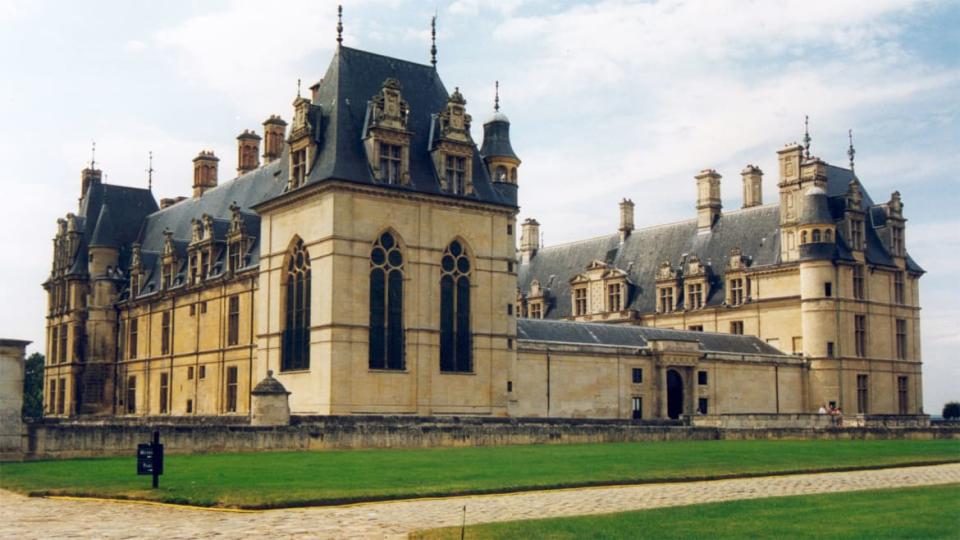
Château d’Écouen.
I was delighted and slightly embarrassed to discover that Écouen is also home to a striking Renaissance-era chateau. Delighted because exploring the country’s chateaux are among my favorite pastimes and slightly embarrassed that I had neither heard of Château d’Écouen nor of its hefty collection of Renaissance art.
The chateau was built in the mid-1500s for Anne de Montmorency, who served as constable of France and was a close associate of King Francis I. An art buff, de Montmorency recruited some of the period’s top artists to decorate the interiors, and today the museum is the only of its kind in the country completely dedicated to Renaissance art. Highlights include paintings by the likes of Guidoccio Cozzarelli and Toussaint Dubreuil, breathtaking tapestries—some of which once belonged to King Henry VIII—and one of the largest collections of stained glass in France. With their leviathan chimneys and wall frescoes, the rooms themselves are works of art, and the fact the vast chateau was constructed in the same period as the numerous treasures within adds a layer of immersion and beauty to the experience that I don’t believe would be possible were the collections displayed in a more contemporary space.
The chateau and its collection are impressive, but after several hours I was starting to get hungry and I knew it was time to move on when I nearly mistook an exquisite, 16th-century dressoir for an ornate chocolate cake. Fortunately, I arrived back in Roissy right around dinnertime, so I headed to Brasserie le Village—a town staple that’s been around since the late 1960s and is the type of place where you’ll find a group of regulars enjoying Friday evening drinks on the front terrace.
Done up with cozy wood paneling and a long interior bar, the restaurant sits on the town’s main artery, Avenue Charles de Gaulle, and serves up homemade French classics like escargots and beef tartare. Their tender magret de canard in orange sauce washed down with a glass of red hit the spot after a long day of exploring, and I advise anyone who has a few hours to kill before a night flight to skip the food counters at the airport and come here instead.
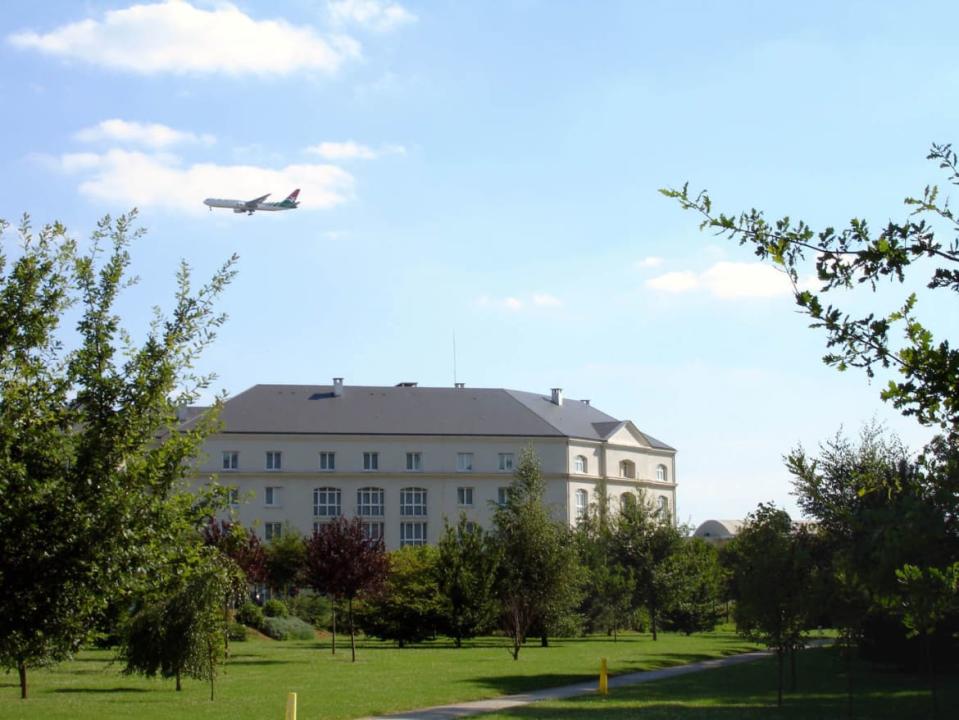
An airplane flies over the hotel zone in Roissy-en-France.
Fewer than 2,800 people reside in Roissy-en-France, and yet because of its proximity to the airport, the town has a startling 33 hotels. The Aiden by Best Western Roissy served as my home during my stay, and offers standard, but comfortable accommodations with a bright lobby decorated with a gallimaufry of beach cabana-style accessories like woven blankets and rattan fans. My cozy room was painted in a vivid, red-orange shade and what appeared to be giant beaded necklaces dangled from one of the walls. The bed was quite comfortable, though, and while I had expected to be kept up all night by the roar of passing 747s, the space was surprisingly quiet and I slept soundly.
The sun was out when I headed to the Royaumont Abbey the next day, and shone like frenzied crystals on the pond in front of the 13th-century property where a family of geese floated lazily by. A Cistercian abbey until the Revolution, it served as the final resting place of several young royals, and was purchased by the prominent Goüin family in the ‘60s, who transformed it into a cultural center. I walked through the arched walkways, landscaped gardens, and former cloister, taking in the gothic architecture with a kind of perplexed awe. How was it, after more than seven years in Paris, that I had missed this place?
During the Revolution, the abbey was ransacked and its stones taken to build factories. Much of it remains intact, but a sliver of its former church stands in testament to the violence of the past. Under a vivid blue sky, the thin, narrow tower looked surreal—almost like a broken puzzle piece or the remains of an elaborate sand castle. My favorite discovery, however, was the abbey’s spacious library, which was adorned with temporary wall frescoes from a recent period film shoot, and contains some 23,000 volumes, plus ancient sheet music. Pianos stood on either side of the space, which are used by the abbey’s annual music residents, who perform at an annual music festival on the abbey’s grounds. As I reluctantly headed back to the car, it was to the strains of a pipe organ as a musician began preparations for a wedding scheduled for later in the day.
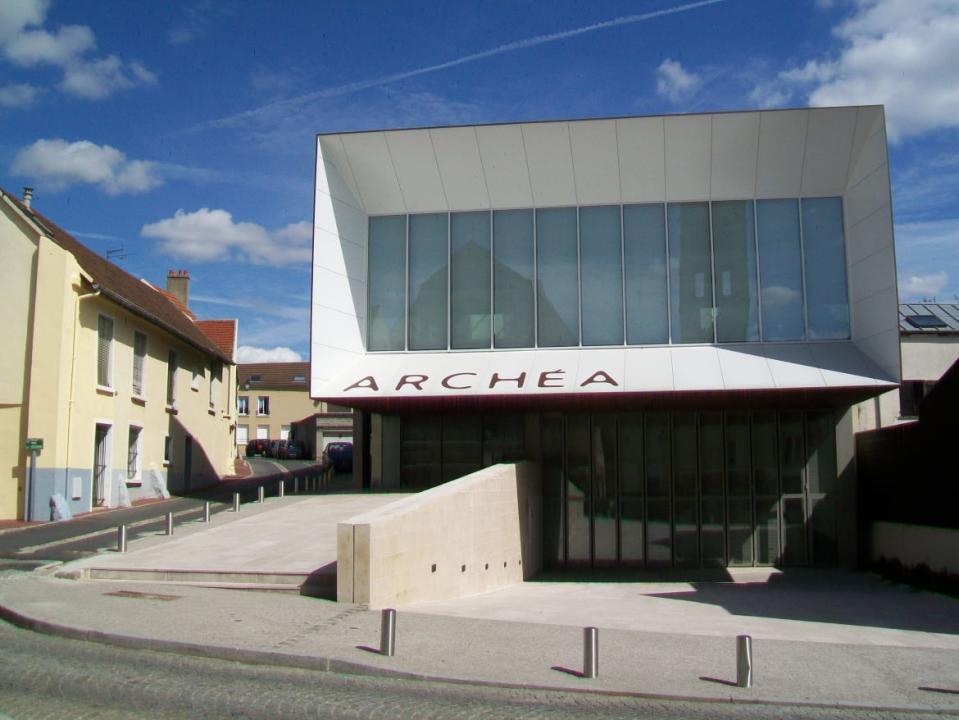
ARCHEA, the archaeology museum in Louvres, France.
You can take an even deeper dive into the Roissy region’s history at ARCHÉA—an archeological museum in neighboring Louvres that showcases close to 800 artifacts that range from delicate gold necklaces to Gallic tombs to pottery. Many items were unearthed during the construction of the airport, but others were discovered during various builds throughout the region. Finds in the museum's permanent collection date from prehistoric times to the 18th century, and my guide informed me that new artifacts are discovered practically every time a building project begins. The collections may be ancient, but the museum itself is contemporary and interactive, offering temporary exhibitions, conferences, and hands-on workshops like medieval-style pottery and weaving.
On my last day in Roissy, I stopped at the Brasserie d’Orville, which is also in Louvres. Small, indie craft beer operations are currently having something of a moment in France, and this snug brewery and taproom on a quiet, narrow street caught my attention because it occupies a former farm reportedly dates back to the Middle Ages. The brasserie was founded a few years ago by two 30-something brothers, and in addition to brewing and bottling, it harvests all its barley on site. The menu features about a dozen craft beers—some permanent fixtures, others seasonal, and others experimental—with quirky names like Hoppy Pony, Angry Pig, and Sugar Daddy. The brewery also incorporates offbeat flavors into some of their recipes like tomato and basil and mango and passionfruit.
A bit skeptical at first, I was nonetheless won over by the refreshing tomato-basil brew, which I imagine would go down nicely during a scorching summer day. And the Sugar Daddy has slight notes of dark chocolate, which, let’s face it, is delectable in almost any concoction. There’s also a beer garden-like patio in the back that was filled with a mixed crowd enjoying various bottles and snacks as the afternoon faded into apéro hour. It could have been an ideal way to wind down my visit, but I had a bus and later a train to catch, so I reluctantly headed back to the airport, grateful for the rays of evening sunlight and the slight buzz from the tasting.
As for the infamous chateau that played such a pivotal role in The Story of O, at first it appeared to have been nothing more than the progeny of the author’s imagination.
Or was it?
Some theorize that the castle that appears in the novel was based on le Château des Caramans, which was also commonly known as le Château de Roissy. The neoclassical chateau was built in 1704 on the orders of the Lord of Roissy, but other grand aristocratic dwellings preceded it during the 16th and 17th centuries. A little bit of online digging revealed that one such abode did in fact play host to a days-long orgy over the 1659 Easter holidays, and that numerous noblemen had been in attendance. Indeed, so scandalous were the goings on in Roissy over that Easter weekend, that one participant, the Count Roger de Bussy-Rabutin, was exiled to Burgundy as punishment.
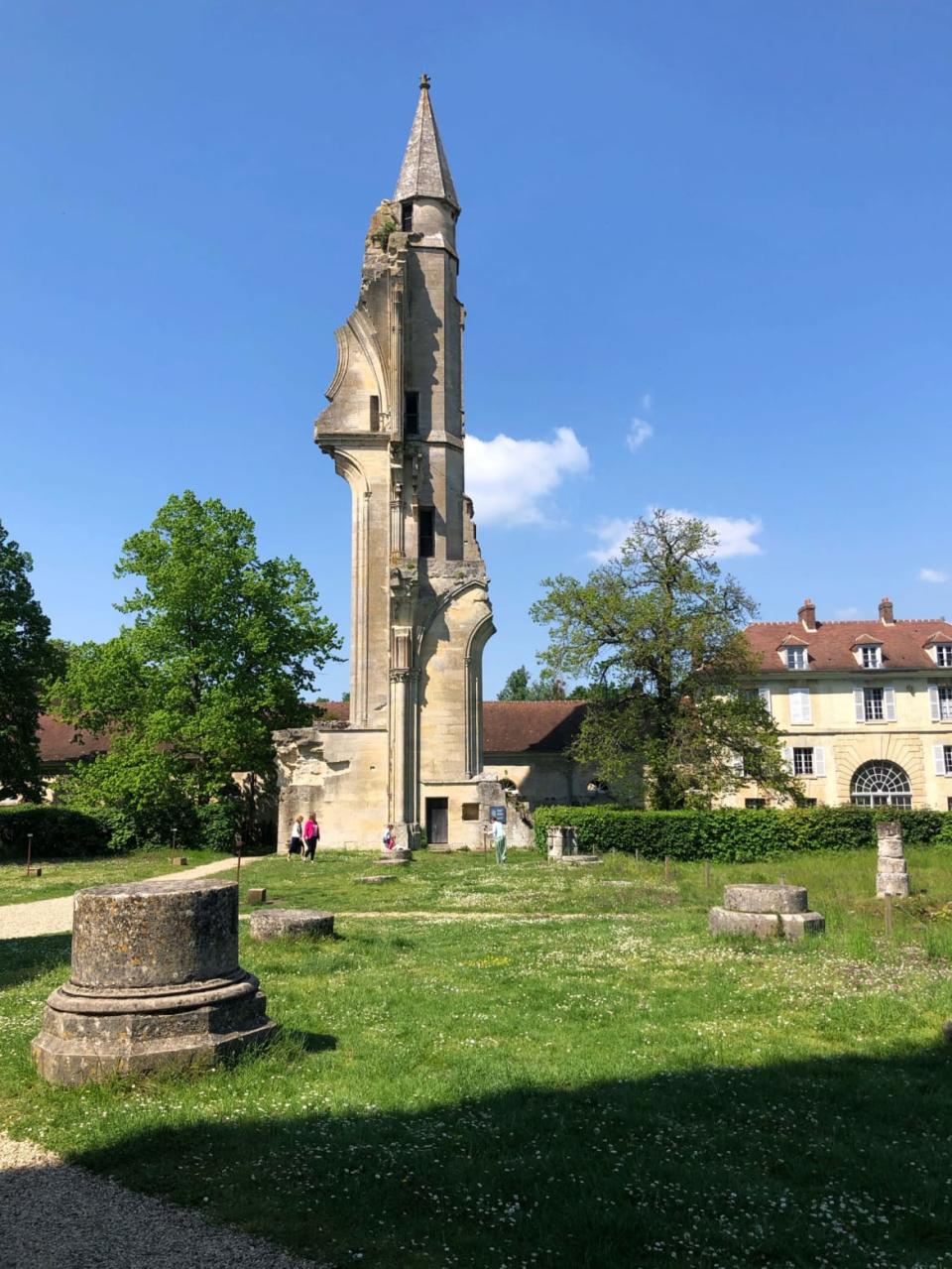
The vestiges of the château de Roissy.
More than 180 miles away from Roissy, the chateau where De Bussy-Rabutin spent his sumptuous exile is still standing. Sadly, the same can’t be said for the château de Roissy, which was burnt down sometime in the late-18th or early 19th-century. Today, only vestiges of its former grandeur remain, namely the east gable door of the chateau stables which are festooned with carved grapes and wheat sheaves in tribute to Roissy’s past as a robust farming village.
It turns out that in 1969 Dominique Aury published a sequel of sorts to The Story of O. Many claim it wasn’t a follow-up novel at all, merely a final deleted chapter from the first book that even the author herself found too ridiculous to let loose into the publishing world. The book in question is called Return to Roissy, and while I’m not keen on slogging through another of Aury’s works, this stalwart little village on the edge of the Paris airport is definitely worth a return trip.
Get the Daily Beast's biggest scoops and scandals delivered right to your inbox. Sign up now.
Stay informed and gain unlimited access to the Daily Beast's unmatched reporting. Subscribe now.

 Yahoo Movies
Yahoo Movies 
